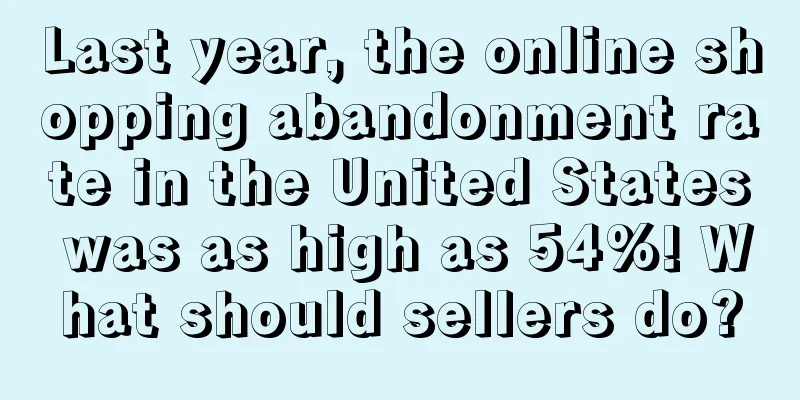As Christmas approaches, 2021 is coming to an end. Affected by factors such as supply chain crisis, labor shortage and inflation, Amazon sellers have experienced a turbulent and challenging year, and the year-end sales season seems to be cooler than in the past.
Looking back at the Black Friday and online shopping promotions not long ago, there was no surge in orders. Instead, the discounts on profits were even greater than the promotions set up by sellers. Looking at the "Black Friday jokes" of sellers, out-of-stock is undoubtedly a major problem that restricts the performance of the peak season . Some sellers' goods have been drifting for months and cannot be docked, while some sellers' goods are waiting in long queues in warehouses and cannot be put on the shelves. However, there are also sellers who cannot ship due to storage capacity restrictions, and miss the opportunity to sell popular products. Fortunately, as 2022 is approaching, Amazon, which had originally adhered to the principle of "sticking to storage capacity and not relaxing", finally made concessions and updated its storage capacity policy. Amazon relaxes replenishment restrictions, IPI threshold drops to 400!
In mid-May, Amazon announced that starting from July 1, the Inventory Performance Index (IPI) score threshold will be changed from 450 to 500 points, and sellers who do not meet the IPI index will be subject to warehousing restrictions. Since Amazon updated its FBA replenishment policy, many sellers have been exhausted by inventory. The weekly inventory capacity update is like opening a blind box. You never know whether Amazon will surprise you with an increase in inventory capacity or a sudden decrease in inventory capacity. Not only that, although sellers work hard to maintain and improve their IPI scores, Amazon’s evaluation criteria seem to be somewhat uncertain. Many sellers meet the IPI standards, but when the inventory capacity is updated, there is only a small increase, or even a decrease, which greatly affects the timely replenishment and listing of products. The fluctuating inventory capacity has long been criticized by sellers, but now the sellers’ earnest pleas have finally been answered. Recently, Amazon US issued an announcement, announcing that it would adjust its inventory policy again. The announcement indicates that Amazon has been working to improve sellers’ replenishment restrictions in recent weeks and will make further improvements early next year: from January 1, 2022, the Inventory Performance Index (IPI) threshold for Amazon Logistics warehouse restrictions will be reduced to 400. Amazon said that once the IPI threshold is officially updated to 400, the number of sellers subject to storage restrictions will be greatly reduced to less than 10%. A seller with an IPI score of 770 received a notice from Amazon: Since your inventory performance index score is at or above 400, your standard size, large piece, apparel and footwear inventory will not be subject to storage restrictions starting January 1 next year. ▲ The picture comes from the seller communication group Some sellers opened the inventory plan to check the cycle storage capacity and found that the storage capacity for the next stage was indeed shown as unlimited. ▲ The picture comes from the seller communication group So why did Amazon suddenly adjust its warehousing policy at this juncture? Some sellers speculated that it was probably because big sellers consumed a large amount of inventory during the peak season, leaving a lot of free FBA storage space, which led to the lower scores. Of course, some sellers also joked that this was just a delaying tactic by Amazon, and they might use the same trick again during the peak season next year. However, despite the reduction in IPI scores and the expansion of storage volume, the real problem that bothers sellers is the inventory quantity. Some sellers said that unlimited storage is still limited by limited storage capacity, and only by opening the replenishment limit can the core problem be solved. Due to unpredictable changes in inventory capacity, many sellers face the dilemma of insufficient inventory and product out-of-stock during peak season sales. Therefore, the implementation of specific special algorithm announcements for replenishment restrictions has become an urgent need for many sellers. Of course, the relaxation of storage restrictions is generally beneficial to sellers, especially in saving a large number of sellers who are dumping their goods . As 2022 is approaching, Amazon's recent policy changes have become more frequent. In addition, there are also constant rumors inside and outside the circle. After the rumor that Baoshijia moved out of the office building overnight was debunked, another big sales storm has arisen again. Cross-border navigation , the best-selling Anker also suffered! Product links were spoofed... #Amazon##Cross-border headlines#Cross-border e-commerce video account ▲ Video account attention: cross-border navigation
Even the TOP best-seller Anker suffered, as the main picture of its product was maliciously tampered with!
Recently, the news that the internet celebrity anchor Wei Ya was fined 1.341 billion yuan for tax evasion has caused an uproar on the Internet. For ordinary people, the gap between this astronomical figure and the astronomical figure is difficult to cross in the next five thousand years. From the perspective of cross-border people, even if it is the top-selling Anker Innovations, based on its net profit of 646 million yuan in the first three quarters of this year, it will take nearly two years to earn enough to pay Viya's fine. ▲ The picture comes from the seller communication group Back to the point, Anker Innovations is a top seller in the industry, and its profit level is always far beyond the reach of ordinary sellers. However, such a top seller was recently exposed that the main image of its product was maliciously tampered with. According to the seller, the main image of an outdoor power supply product produced by Anker Innovations was replaced with various spoof emoticons. ▲ The picture comes from the seller communication group Some sellers speculated that the prank on Anker was done by its competitors or by the service provider. Shortly after the incident, the link to the product on Anker's Amazon store was removed, while the product was still on sale on its independent website. At present, some sellers have found after searching that the product has returned to normal and disappeared, but the main picture has been deleted and the product ranking has also disappeared. ▲ The picture comes from the seller communication group Some sellers lamented that even Anker, the industry leader, was spoofed, which shows that Amazon does not effectively protect the rights of sellers and it is very easy for loopholes to be exploited to attack sellers. For Amazon sellers, it is difficult to prevent competitors. Competition chaos such as tampering with product main pictures, negative reviews, and malicious follow-up sales are rampant. Even if you fight back, you may suffer more severe retaliation. One seller said that an operations manager in his company's products were often attacked by a leading competitor. After he could no longer bear it and fought back, the links were spoofed and taken off the shelves several times within a month. The reason for this chaos is essentially due to Amazon's mechanism. Even a bad review or a complaint may have a negative impact on the store. What do you think about this? Feel free to leave a message in the comment area~
|










